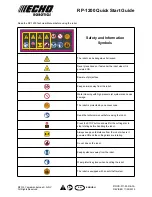
the LED.
The A-Star 32U4 boards are similar enough to the Arduino Leonardo that you do not
actually have to install the add-on. If you want to, you can just select the “Arduino
Leonardo” board in the Arduino IDE. Note that if you upload a sketch to the device this
way, your computer will then recognize it as a Leonardo (for example, its entry in the
Windows Device Manager will display “Arduino Leonardo”).
After you succeed in programming your device from the Arduino IDE, there are many resources you
can use to learn more:
• The Arduino IDE has many
[http://arduino.cc/en/Tutorial/HomePage]
that can run on A-
Stars.
• The Arduino website has a
[http://arduino.cc/en/Reference/HomePage]
, a
wiki called the
[http://playground.arduino.cc/]
• The A-Star 32U4 boards are similar to the
[https://www.pololu.com/product/
and
[https://www.pololu.com/product/2188]
, so you can search the Internet
for relevant projects that use one of those boards.
• The Related Resources section lists many more resources.
5.3. Programming using avr-gcc and AVRDUDE
This section explains how to program our 32U4 family of boards using the avr-gcc toolchain and
AVRDUDE. This section is intended for advanced users who do not want to use the Arduino IDE as
described in the previous section.
Getting the prerequisites
If you are using Windows, we recommend downloading
[http://winavr.sourceforge.net/]
, which
contains the avr-gcc toolchain and a command-line utility called
that can be used to upload programs to the A-Star bootloader. If the version of GNU Make
that comes with WinAVR crashes on your computer, we recommend using the
[https://github.com/pololu/make/releases]
.
If you are using Mac OS X, we recommend downloading the
[http://www.obdev.at/products/crosspack]
.
If you are using Linux, you will need to install avr-gcc, avr-libc, and AVRDUDE. Ubuntu users can get
the required software by running:
Pololu Balboa 32U4 Balancing Robot User’s Guide
© 2001–2019 Pololu Corporation
5. Programming the Balboa 32U4
Page 74 of 97
















































